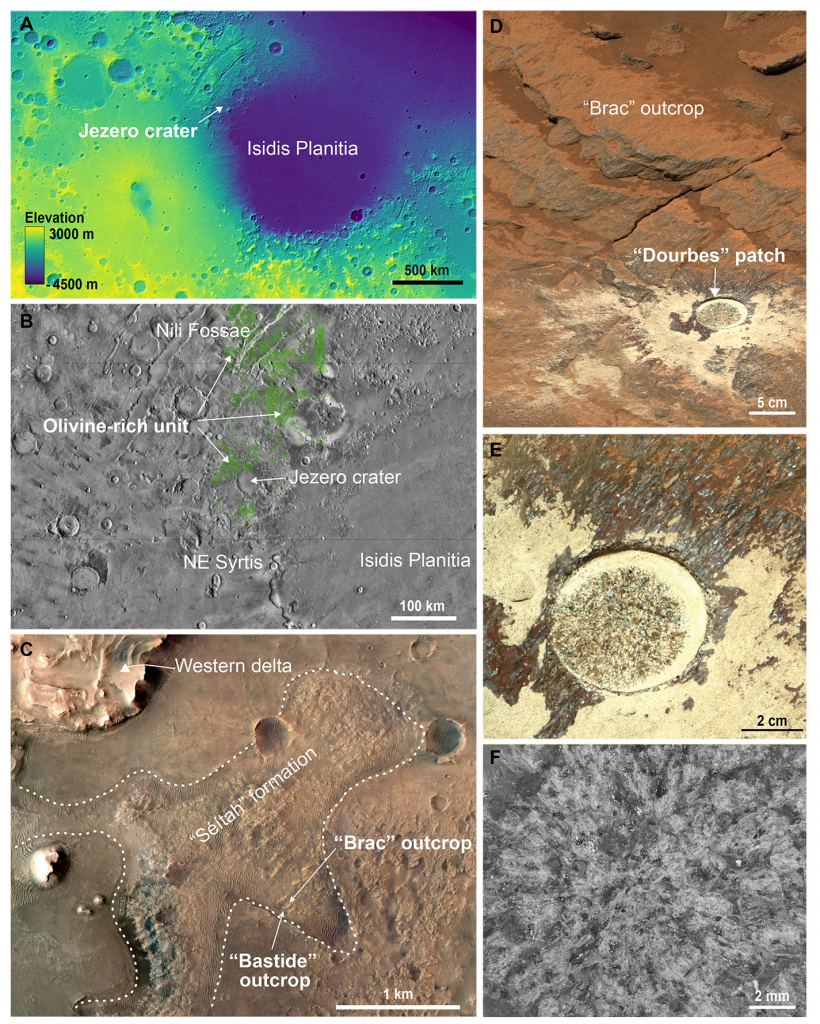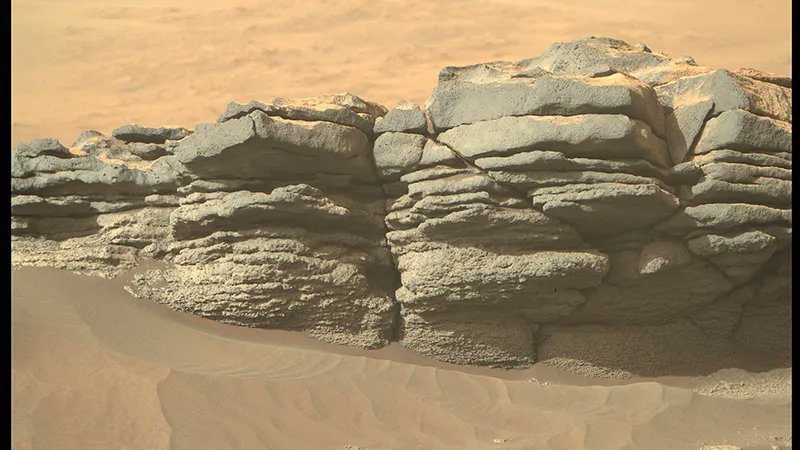Green sand might sound like a strange thing to find on the Red Planet, but that is exactly what a new paper from researchers led by a team at Purdue found in images from Perseverance.
The findings, published recently in a spate of papers in Science and Science Advances, even surprised some of the scientists working on the mission. While observing Perseverance’s landing site from orbit, it became clear that the rover would be landing near some spectacular layered rocks in Jezero Crater. What the team didn’t realize is they were looking at volcanic rock rather than sedimentary.
That might seem like a minimal distinction, but it was a huge discovery for the geologists studying the crater. Scientists expected to find sedimentary rocks, which had been worn away by water when Jezero crater, and Mars more generally, was a much wetter place. And while they did find some sedimentary rocks, they were typically deposited near the floor of the crater, what would have been the lake bottom during that wetter period.

Credit – Farley et al.
Rocks on the way up the sides of the crater, which are the ones that were the most visible from space, were igneous – the type that forms from lava. What’s more, the rocks were a lot older than they expected. After observing them in detail with Perseverance’s SuperCam, the rover’s geology team realized that these rocks were more than 4 billion years old.
On Earth, rocks that old would be weathered down by our climate. But on Mars, they are almost pristine, which means they are also easier to study. When the scientists did that, they discovered a color they were not expecting – green.
Mars is known as the Red Planet for good reason – oxidation has formed a red tint to almost everything on the planet’s surface. Upon closer inspection, though, these igneous rocks were actually made of a mineral called olivine. Olivine is a slightly less spectacular version of a commonly known gemstone here on Earth – peridot.

Olivine is also what makes the beaches on Hawai’i seem dark green, and it has the same effect on Mars. But on Mars, its age makes it even more special, especially as a laboratory for understanding the workings of the early solar system.
It is also a fascinating window into what the earlier Earth might have been like, right around when life formed almost 4 billion years ago. Earth’s environment from that time is lost to us, changed irrevocably by the climate and tectonics over millions of years. But on Mars, the environment has remained largely untouched until Perseverance happened upon it.
Finding the rocks and conducting a preliminary analysis is just the first step. Further, more detailed analysis is needed before anything conclusive can be said about the environment of Jezero crater earlier in the solar system and whether it could have been habitable. But that is one of the primary goals of Perseverance and its team of dedicated geologists. This newest discovery is a step in the right direction.
Learn More:
Purdue – The sands of Mars are green as well as red, rover Perseverance discovers
Farley et al – Aqueously altered igneous rocks sampled on the floor of Jezero crater, Mars
Liu et al – An olivine cumulate outcrop on the floor of Jezero crater, Mars
UT – Strange Intersecting Sand Dunes on Mars
UT – This is Probably Sandstone Layers on Mars. Absolutely Beautiful

